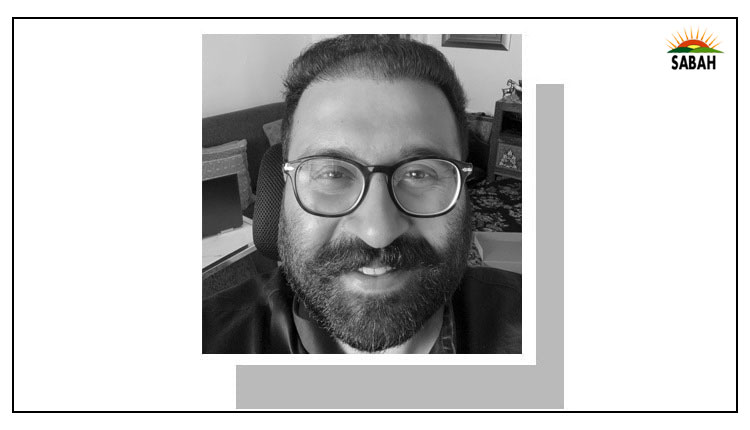Princes of procedure … Abdul Moiz Jaferii
AT times, judges are put on the spot. It might be that the positions they have consistently stated throughout their career on a certain issue are on the line in a high-stakes human rights case. Or that they are hearing a case which external influences would rather they let linger if they can’t decide it the way they’re supposed to. Or it might just be that they are bored and don’t want to hear that particular case any longer.
At these times, the shiniest tools in a judge’s shed become procedural requirements. Has everyone been put on notice? Are the filings completed by all parties? Is everyone ready to proceed? Do we have enough time left in the roster sitting?
Proper procedure is necessary. It creates consistency, stability and a measure of predictability — all fundamental components of due process. Adherence to procedural norms helps prevent arbitrary justice such as crowdfunded dams and choice demolition of residential buildings. But in our constitutional and political circumstances, procedural over reliance is sometimes seen as a sign of cowardice.
A judge may attempt to forgo his duty by hiding behind procedural allowances in the law, which are crafted in a way to accord legitimacy to the state’s intent in a particular case. What’s the problem if police in Quetta want to investigate someone who has never been there? Surely there’s no problem unless you have something to hide.
Procedural compliance at times also helps to hide what a judge is made of.
It was the apparently benign intent to adhere to procedure which allowed most of our Supreme Court to throw the current chief justice to the hounds he had exposed as hounds in his challenge to the reference against him. What’s the problem with answering the taxman about these assets which don’t belong to you? Surely, as you said, you have nothing to hide.
It was the crutch of procedure which allowed for the state to hollow out Imran Riaz Khan, whilst the chief judge of the Lahore High Court found one excuse after another in procedure.
It is the pretence of adherence to procedure which creates room for the state to continue to use laws that are no longer on the books after the apex court has struck them down as unconstitutional.
There is an appeal yet to be heard; so we’re not listening to the Supreme Court’s directions. That the Supreme Court then sits in a larger capacity and undoes its own decision without asking for the state to account for its contemptuous disregard of the underlying order is a separate tragedy.
It is the breaking of this pretence, and the desire to see the forest for the trees, which causes actual tremors in the system. Such as Justice Babar Sattar asking the state to answer for its clear pattern of flouting court orders by way of repetitive detentions in political cases. But as long as individual judges like Justice Sattar are outliers, and aren’t supported by the strength of their colleagues acting in unison, they can be treated as outliers and their orders can be abused with disregard.
The Peshawar High Court issued orders to negate this trial by procedure. It ordered all district court judges to break these intellectual shackles and require a judicial order for the arrest of someone already on bail in another matter from a court. The Supreme Court suspended this order, finding no grounds in procedure which allow for such blanket protection. Our august court saw the tree and declared it a mutant. Whilst ignoring that the rest of the forest was on fire.
With Imran Riaz’s release, the top judge of the Lahore High Court was the one actually set free from his intricate engagement with procedure over four months — assisted ably by Imran Riaz’s lawyer who was rather publicly professing to be playing the role of middleman.
Sometimes it pays to be prince of procedure. Such as when Faisal Vawda managed to delay a hearing on his misdeclaration of nationality for over a year until he had been booted onto a Senate ticket. Thereafter, the suddenly invigorated judge hearing the disqualification challenge made clear that had it not been for procedural limitations, justice would have had its day.
Procedural compliance at times also helps to hide what a judge is made of. In terms of capability, there are broadly three kinds of judges. There are the few who can handle all cases, including fiscal and contractual matters.
Expertise with numbers is a less-than-common trait amongst most otherwise lettered men, as Saqib Nisar made clear when he thought he could penalise his way into building a $17 billion dam. Then there are the many judges who can handle all matters other than fiscal and contractual, which still requires a comprehensive understanding of procedural and civil law. All the judges left over are known as experts in criminal law.
Most criminal law in Pakistan revolves around whodunit. Case law and precedent are a poorly written and repetitive story of ‘he said, she said and he said it when he was about to die so we must believe him’.
Yet there are judges within the last subset of expertise who choose to hide behind decades of repetitive, outdated and inefficient procedure rather than resolve the simple issues that face criminal law benches in the superior courts.
This inevitably falls upon the constitutionalists to remedy, as Justice Mansoor Ali Shah has recently done with far-reaching and modernising judgements on evidentiary process and criminal procedure. With one well-reasoned order, 70 years of bad practice by the police and lower judiciary can be arrested.
Many judges have drunk at the fountain of knowledge, whilst some have just gargled. Such is the norm on benches all over the world. Yet the hitherto absolutely opaque method of judge-making in Pakistan ensures there are some serving on benches who are gifted with wisdom that one could only possess if one had subjected the fountain to an act of public vandalism. Unless, of course, there’s something else going on entirely.
The writer is a lawyer.
X: @jaferii
Courtesy Dawn, December 23rd, 2023












